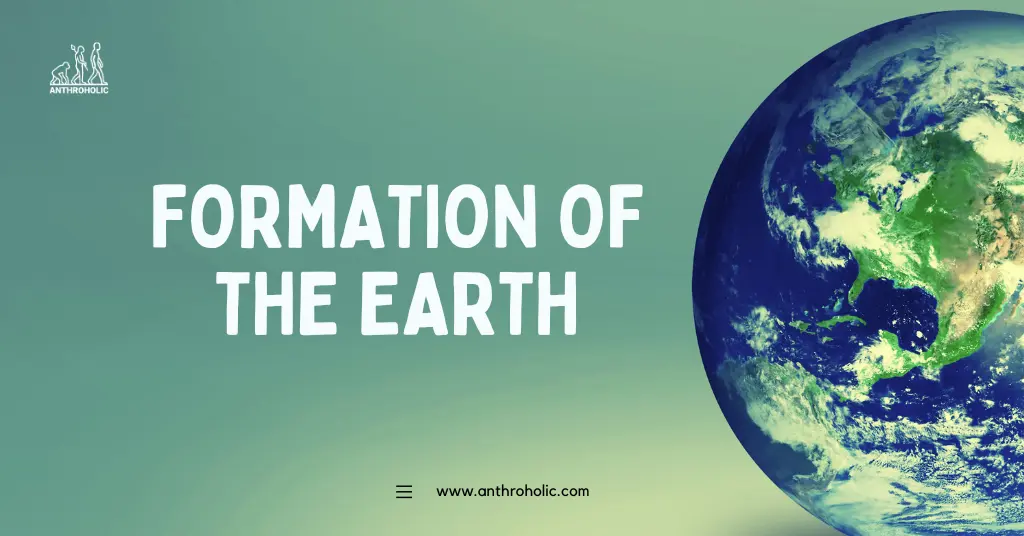AI Answer Evaluation Platform Live Now. Try Free Answer Evaluation Now
Formation of Earth
Understanding the formation of Earth is a key to grasping our planetary history and the processes that have led to our present condition. Our planet came into existence approximately 4.54 billion years ago, formed from the dust and gas of the nascent solar system. It has since then undergone profound transformations to become the hospitable world we know today.

Cosmic Beginnings: The Solar Nebula Theory
The most widely accepted model for the creation of our solar system, and thus Earth, is the Solar Nebula Theory [1]. Approximately 4.6 billion years ago, a giant molecular cloud in our galaxy underwent gravitational collapse, forming a spinning disk of material, the solar nebula.
- Accretion: Dust and gas particles within the solar nebula began to collide and stick together, forming planetesimals. Over time, these planetesimals aggregated to form larger bodies termed protoplanets.
- Differentiation: As these protoplanets grew in size, their internal heat caused them to melt and differentiate, with denser materials sinking to the center and lighter materials rising to the surface. This process eventually led to the formation of a differentiated Earth with distinct crust, mantle, and core layers.
Earth’s Early Evolution: The Hadean Eon
Named after Hades, the ancient Greek god of the underworld, the Hadean Eon (4.5 – 4.0 billion years ago) represents the early formative period of Earth. It was characterized by:
- Intense Meteoritic Bombardment: The Hadean Eon saw a period of heavy meteorite impact known as the Late Heavy Bombardment. This relentless meteoritic activity contributed to Earth’s mass and delivered essential volatile compounds, including water and organic molecules [2].
- Formation of the Moon: The most popular theory regarding the Moon’s formation, the Giant Impact Hypothesis, posits that a Mars-sized body, Theia, collided with the young Earth. The debris from this collision eventually coalesced to form the Moon.
A Habitable Planet: The Archean and Proterozoic Eons
The Archean Eon (4.0 – 2.5 billion years ago)
During the Archean Eon, Earth cooled sufficiently to allow the formation of continents and life began to appear.
- First Continents: The earliest continental crusts, composed mainly of granite, started to form and stabilize, creating platforms for life’s evolution [3].
- Emergence of Life: Life began as simple, single-celled organisms, possibly in the ocean’s hydrothermal vents. These early life forms transformed Earth’s atmosphere through the process of photosynthesis, releasing oxygen into the atmosphere.
The Proterozoic Eon (2.5 billion – 541 million years ago)
The Proterozoic eon saw the development of more complex life forms and the formation of Earth’s stable continents.
- Continental Growth and Stabilization: The continents grew larger and stabilized, shaping the landmasses we recognize today.
- Atmospheric Oxygenation: As photosynthetic life forms continued to proliferate, they dramatically increased the oxygen content in Earth’s atmosphere, making it more hospitable to future complex life [4].
The Phanerozoic Eon: Life Flourishes
The Phanerozoic Eon (541 million years ago to present) heralds an explosion of life and marks the period most familiar to us, characterized by the presence of complex multicellular organisms and the development of diverse ecosystems.
The Cambrian Explosion
The beginning of the Phanerozoic is marked by the Cambrian Explosion, a relatively short period during which most major animal phyla appeared. This rapid diversification of life forms was likely facilitated by high oxygen levels and the evolution of predator-prey relationships.
Continental Drift and the Formation of Pangea
Around 335 million years ago, Earth’s landmasses merged into a supercontinent known as Pangea. The formation and subsequent breakup of Pangea due to plate tectonics profoundly influenced global climate, sea levels, and life on Earth.
Emergence of Vertebrates and Mammals
During the Phanerozoic, vertebrates emerged from the ocean and began to dominate terrestrial environments. Mammals, in particular, diversified rapidly following the extinction of dinosaurs 65 million years ago, eventually leading to the emergence of Homo sapiens.
| Era | Time Period (Years Ago) | Key Developments |
|---|---|---|
| Paleozoic | 541 – 252 Million | Cambrian Explosion, Formation of Pangea |
| Mesozoic | 252 – 66 Million | Dinosaurs Dominate, Mammals Emerge |
| Cenozoic | 66 Million – Present | Rise of Mammals, Emergence of Humans |
The Anthropocene: Human Influence on the Planet
The Anthropocene, proposed as a new epoch, signifies the period during which human activities began to have a significant global impact on Earth’s ecosystems. The start of this epoch is generally placed around the Industrial Revolution (late 18th century) but is yet to be formally accepted by the International Commission on Stratigraphy.
Human activities such as industrialization, deforestation, and emission of greenhouse gases have led to global environmental changes, including global warming, habitat destruction, and loss of biodiversity. These changes highlight the profound influence humans exert on our planet and emphasize the urgency of sustainable practices to preserve Earth for future generations.
Conclusion: A Planet in Continual Evolution
The formation and evolution of Earth is a grand narrative of cosmic beginnings, transformative collisions, dramatic climatic shifts, and the emergence and evolution of life. From a hot, inhospitable mass, Earth has evolved into a planet teeming with diverse ecosystems and life forms, including us, Homo sapiens, who now wield significant influence over its future. The Earth’s story underscores the interconnectedness of cosmic and biological processes, reminding us of our responsibility to understand, respect, and protect our extraordinary home.
References
[1] Carl Sagan and Steven J. Desch. “The Solar Nebula Theory”. The Astrophysical Journal, 1977.
[2] Morbidelli, A., et al. “Source Regions and Timescales for the Delivery of Water to the Earth”. Meteoritics & Planetary Science, 2000. https://doi.org/10.1111/j.1945-5100.2000.tb01518.x
[3] Harrison, T. Mark. “The Hadean Crust: Evidence from >4 Ga Zircons”. Annual Review of Earth and Planetary Sciences, 2009.
[4] Holland, Heinrich D. “The oxygenation of the atmosphere and oceans”. Philosophical Transactions of the Royal Society B, 2006.




